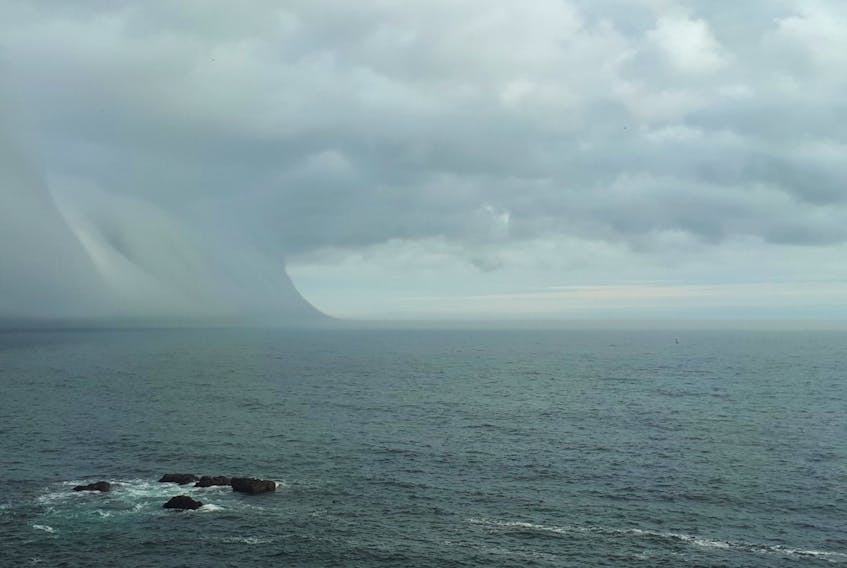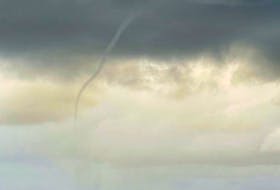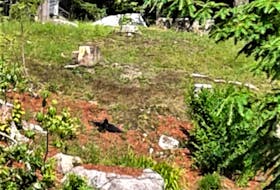Just when you think you’ve seen it all, along comes a gust front.
It must have made quite an impression because John and Olive Spawn noted the exact time they spotted what looked like “a giant wave over the ocean.” The Spawns watched as the menacing cloud tracked across the water just beyond the Louisbourg Lighthouse in Cape Breton.
“It was 1:14 p.m.; the temperature was 16 degrees and the winds were light from the SSW when we saw it. In about two hours the temperature dropped to 11 degrees and winds picked up a bit from NNE. My wife and I have never seen anything like this before as we are avid weather watchers.”
That is a great detailed description of conditions associated with a fascinating meteorological event known as a gust front. The gust front often produces a shelf cloud (as seen in the second photo). A shelf cloud is a low, horizontal wedge-shaped cloud attached to the base of the parent cloud.

Here’s how: A gust front develops on the leading edge of an approaching cold front. Cool, sinking air from a storm cloud’s downdraft spreads out ahead of the cold front. As the cold gust front goes down and out, warm air ahead of it is forced up and over. As the air rises, condensation occurs; the swirling effect of the updraft can produce an ominous-looking shelf cloud.
Another name for a shelf cloud is an arcus cloud. As the arcus cloud passes overhead, you can expect to encounter wind and due to the rain-cooled air, a drop in temperature.
It’s so important to look around and observe nature; there is a lot to be learned in Mother Nature’s classroom.
- Want more weather information? Visit your weather page.
- Have a weather question, photo or drawing to share with Cindy Day? Email [email protected]
Cindy Day is the chief meteorologist for SaltWire Network









